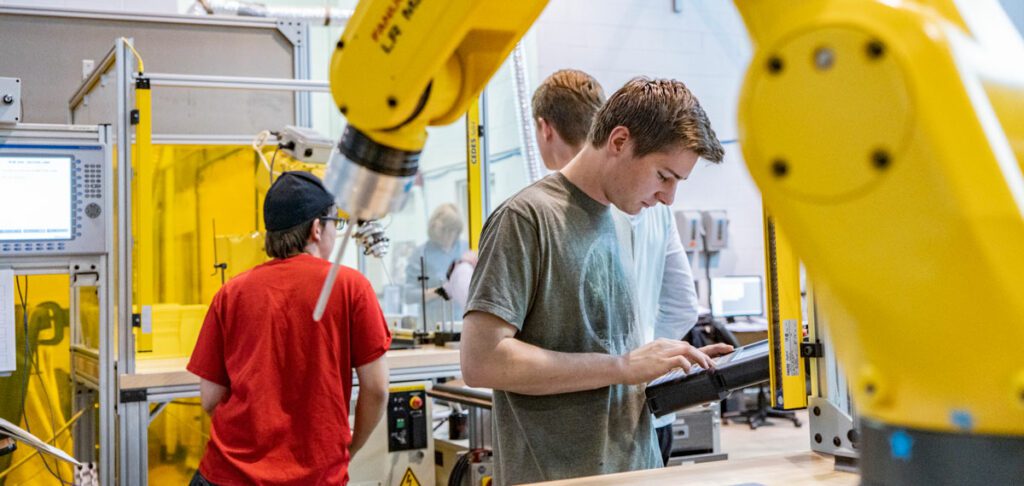In our rapidly changing world, educators, architects, and business leaders are united in understanding that the traditional education model is no longer enough to prepare students for the challenges that lie ahead. In response, many school districts are engaging with businesses to empower students with the right skills and passion to succeed in the workforce.

Traditional career technical education, or “votech,” happened apart from the mainstream high school setting and was tailored to non-college-bound learners. With the emerging pedagogical trends in mainstream education toward real-world, skill-based, experiential learning, a curriculum that looks like traditional career tech is making its way into classrooms everywhere. For example, whereas robotics used to be just an after-school club, real-world robotics programming is a course available during the school day. In an effort to expand what it means to earn a high school diploma, these courses provide students with real-world credentials. This means students can finish a robotics programming course with a certificate, making them fully qualified for employment.
This micro-credentialing allows a high school diploma to be the ticket to the high-tech, high-quality, high-salary career it once was. Businesses like FANUC America, for example, have taken action to create their workforce by partnering with local K-12 School Districts to deliver credible, relevant curricula to students focused on advanced manufacturing and robotics. FANUC may need programmers for their robots, but our world also needs citizens who can collaborate with artificial intelligence and other technologies to guide us in this new frontier.

The currency of micro-credentialing is not limited to those students who choose to pursue a career after high school. Understanding this foundational knowledge of how to program robots used in most manufacturing sectors today can prepare those students looking to pursue degrees in everything from engineering to entrepreneurship. The more real-world, portable skills and experiences we can expose our kids to, the more fluent they will be in a rapidly evolving economy.

This experiential approach to learning challenges us to explore the critical factors that contribute to an ideal CTE learning environment and turn emerging programs into viable student career pathways. While each District needs to evaluate the right direction to meet its curricular goals, there are some universal factors to consider in the process:
-
Local economics play a vital role in creating an ideal CTE learning environment. A community’s economic conditions and the school district’s success are closely tied, as a robust local economy can help create job opportunities for students and foster strong community partnerships, which can help create conditions where students thrive once they leave their K-12 years. Understanding who is hiring your graduates can ensure that the curriculum being championed in school aligns with the skills needed to succeed and be competitive in the real world.
-
Community support and partnerships also contribute to a meaningful CTE program. Strong, consistent support can provide students with the assistance they need to succeed through activities such as mentorship, internships, and job shadowing opportunities. This dynamic relationship between school and the community can often lead to more significant resources to fuel student success.
-
Thoughtful space design and planning are essential in creating an ideal CTE learning environment. The physical environment is crucial in creating a positive, practical learning experience for students. The classroom layout, equipment quality, furniture flexibility, and adjacency to resources within the school building are all design elements that contribute to a successful CTE program. Architecture firms, such as TMP Architecture, are working closely with a wide range of school community stakeholders (including school administrators, educators, businesses, students, parents, etc.) in order to fully understand the scope of needs, values, and goals. This attention to the alignment of space and educational activities is essential to long-term programmatic success.
-
Intentional curriculum is another critical factor in creating an ideal CTE learning environment. The curriculum must give students the right skills and knowledge to succeed in the workforce and satisfy academic requirements for graduation. This attention and sensitivity can make extracurricular and emerging programs robust educational tracks. Companies like IST (Integrated Technology Systems) work with district administrators to develop certified curriculum plans that find creative and practical alignment between graduation requirements and job skill credentials.








